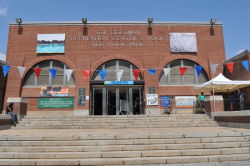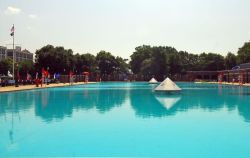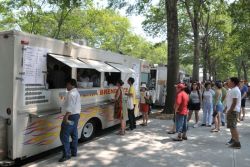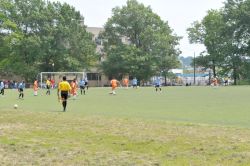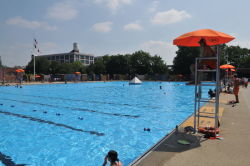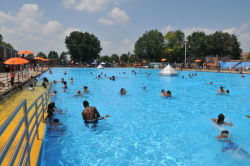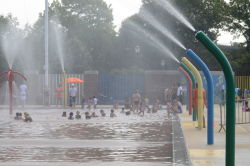Red Hook Recreation Area
Bush-Clinton Playground
This playground is named for Bush and Clinton streets, which bound the area. Bush Street was most likely named for one of the many prominent Bush families who lived in the neighborhood. Clinton Street is named after De Witt Clinton (1769-1828), who served as the Mayor of New York City, as a member of the United States Senate, and ultimately as the Governor of New York.
De Witt Clinton was born in Little Britain, New York on March 2, 1769, the son of James Clinton, a Revolutionary War general. His distinguished life in politics began with his job as private secretary for his Uncle, Governor George Clinton, in 1790. From there he was appointed to the U.S. Senate in 1802 and a year later he was appointed Mayor of New York City. Almost every year until 1815 he was re-appointed to that post, until 1817, when he was elected to replace Daniel D. Tompkins (1774-1825) as Governor.
As a statesman, Clinton is probably best known for his part in building and opening the 363-mile Erie Canal, which expanded trade to the Midwest and made New York City the commercial hub of the United States. In addition to this street and the playground, there are two neighborhoods, a high school, and several other parks named after him in the city.
Because of the many notable figures in the neighborhood with the Bush namesake, it is less clear who exactly lent his name to the street. Tracing back to the earliest colonists, one finds a Hendrick A. Bush who came from Lynden in the Netherlands to settle in New Amsterdam. Dutch immigrants settled the neighborhood of Red Hook in 1636, calling it Roode Hoek due to the reddish color of the soil and the distinctive shape of the land.
This playground, which has four basketball courts and other recreational equipment, is part of the larger Red Hook Park and Recreation Center. The City acquired the first piece of land for what is now Red Hook Park on October 10, 1913, originally to provide terminal facilities for the marginal freight railroad. The property was not assigned to Parks until June 27, 1934, the first year of Commissioner Robert Moses’s (1888-1981) 26 year tenure at Parks. The other parcels came under Parks jurisdiction between 1935 and 1947. Gilmore D. Clarke (1892-1982), one of America’s most prominent landscape designers at the time, laid out the original development plan for the Recreational Center.
Check out your park's Vital Signs
Clean & Safe
Green & Resilient
Empowered & Engaged Users
Share your feedback or learn more about how this park is part of a
Vital Park System

